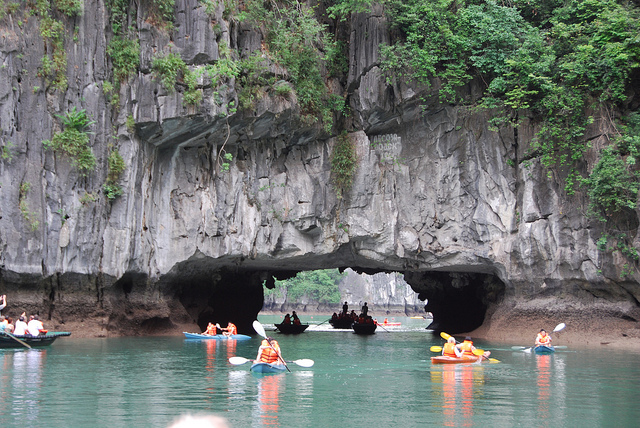Hạ Long Bay, also known as Halong Bay, is a captivating natural wonder located in Quảng Ninh province, Vietnam. Let me share some fascinating details about this UNESCO World Heritage Site:
Name and Meaning:
The name “Hạ Long” translates to “descending dragon” in Vietnamese.
Legend has it that a celestial dragon descended from the heavens and created the bay by spitting out jewels and jade, which then turned into the limestone karsts and islets we see today.
Geological Marvel:
Hạ Long Bay covers an area of approximately 1,553 square kilometers (600 square miles).
It features over 1,969 limestone islets, most of which have unique shapes and sizes.
The core of the bay, with a high density of 775 islets, spans an area of 334 square kilometers (129 square miles).
These limestone formations have undergone 500 million years of geological evolution under various conditions and climates.
Biodiversity:
The diverse environment in Hạ Long Bay supports rich biodiversity.
It is home to 14 endemic floral species and 60 endemic faunal species.
The lush vegetation and secluded beaches on the rocky islands create a mesmerizing landscape.
Historical Significance:
Prehistoric human presence in the area dates back tens of thousands of years.
Ancient cultures, such as the Soi Nhụ culture (18,000–7,000 BC), the Cái Bèo culture (7,000–5,000 BC), and the Hạ Long culture (5,000–3,500 years ago), left their mark here.
Notable artifacts have been found in places like Bài Thơ mountain, Đầu Gỗ cave, and Bãi Cháy.
UNESCO Recognition:
In 1994, Hạ Long Bay was inscribed as a UNESCO World Heritage Site during the 18th session.
It continues to be a popular travel destination, drawing visitors from around the world.
Next time you visit Vietnam, consider exploring this breathtaking bay with its limestone karsts rising dramatically from emerald-green waters!
Bai Tu Long Bay





